At times it seems an ancient place slowly marking the passage of time under the shade of giant trees until modernity pushes its face out to proclaim its presence.
Its peace is only shattered by the whine of vehicles racing on the highway that passes through the village. On the surface, Vergenoegen on the East Bank Essequibo is the quintessential rural Guyanese community, laid back most times but springing to life in a heartbeat. Its people are, at the same time, outspoken and shy, willing to speak about the village but declining to be photographed.
Moulded by an at times turbulent past, villagers take pride in the achievements of its sons and daughters that have made the village one of the better known communities in Guyana. Vergenoegen- a Dutch word – means Land of Contentment, they say.
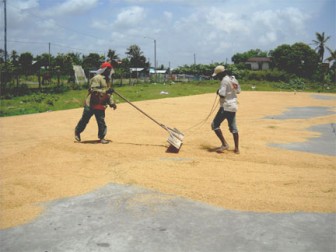
Several older residents say the village has scarcely changed since their youth. The Vergenoegen Cooperative Society rice mill established in colonial times, still stands, grinding when the crop comes in. “That’s the oldest rice mill in Guyana,” says one resident. A bakery established decades ago, bakes again, though under new management. It is a tightly knit community where everyone knows everyone.
But the village has grown too. One of its sons, businessman Shiraz Ali, emerged from humble beginnings to establish successful businesses which he oversees from his Vergenoegen headquarters. His Two Brothers brand is well known, with seven petrol stations along the coast bearing the logo. He also cultivates rice and established another rice mill in the community in addition to
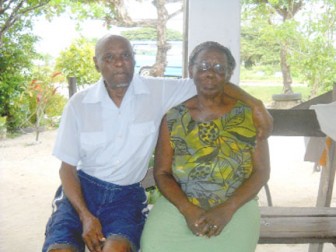
mining interests.
Ali’s down-to-earth demeanour has seen many seeking him out for one reason or the other. He was born and grew up in Vergenoegen and retains the attachment, hence the retention of his business headquarters there. He likes farming, he adds. Ali says that the village took off after the initiation of a Land Development Scheme whereby villagers could obtain 20 acres of land for their use. He says business is reasonable but opines that the village was much more vibrant in the past. “When I was a
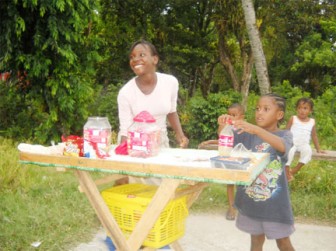
small boy, the village use to be brighter than it deh now,” he recalls.
These days the over 2,000 residents follow varied paths: some continue farming, some work in the sugar estates, others have jumped into the business sector – several establishing their own businesses; fishermen still sail to the sea, youths head to the gold mining fields in the interior but unemployment is high as well. While some well-known businesses like a sawmill have closed, other entrepreneurs have stepped up and in the village there is now a plant nursery, a furniture-manufacturer, block-makers, mechanics, family shops and assorted rum shops and pool-halls.
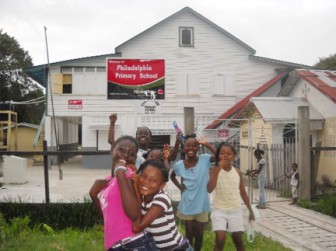
Crime is low but incidents still happen, villagers say. “The only thing you got to worry about is mining (live) stock,” Laura Batson says. “They thief yuh fowl, they get cook and then inviting you to eat your own fowl.” However, this level of crime is low compared to the past when there was lots of looting, she adds.
Several churches and a mosque dot the community while rickety, empty houses tell the story of those who have migrated; but others have moved into the not-so-new housing scheme. Residents agree that these days, the multi-ethnic village is harmonious and peaceful.
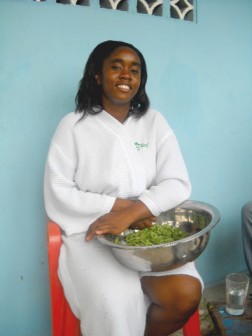
Ivan and Elroy
A few decades ago, it was not so. Vergenoegen, like much of the coastland of Guyana, was swept up in an upheaval that many can recall vividly today. The story of Ivan and Elroy Henry appears to be the story of a number of Vergenoegians. The year was 1964.
Now 70, Elroy says she was born in the neighbouring village of Tuschen. She married Ivan when she was 14. They lived well together, their different ethnicities not a source of division for their families, she says. “It was good,” she recalls. In 1964, Elroy was pregnant with the couple’s fourth of their ten children. It was the year of the “disturbances” when political and ethnic tensions rocked the coast. “It was very scary, there were guns,” she recalls. “It was terrible, gunshot all kind ah thing, we use to lie down hearing [people] running helter skelter.
“We had to remove from there,” she says.
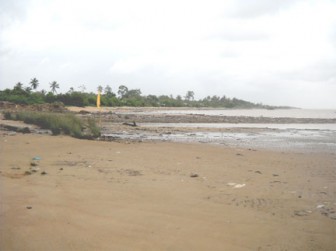
She explains that during the disturbances, tensions between Guyanese of East Indian and African ethnicities were high and had escalated to a point where anyone of a different ethnicity to those who predominated in the village, were forced to leave. She left her in-laws in Tuschen and moved to Vergenoegen. Her husband accompanied her. “It was very scary, you had to evacuate by night. We lost some of our belongings,” the woman says. She recalls that a number of families moved in this manner.
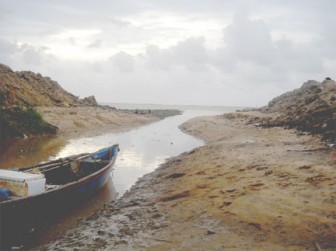
It was a scene that repeated itself in communities across the coast. “This land here, the person exchange with us for Tuschen and we take here, we get here,” Elroy says. Guyana was then under British rule and a detachment of the British Guiana Volunteer Force was stationed in the community.
Lois Levans says her family moved from De Williem the same year because of the disturbances. They moved first to an area called ‘Self-Help’ before permanently settling in Vergenoegen. “It was like war,” she says. She recalls that her mother sold their home in De Williem for $500 which was a lot of money at the time but many others were not so lucky.
Levans recalls her father, the late Edward ‘Guitar’ Levans telling them of an incident he experienced. He was a headmaster and much-respected. She says that her father and a brother were fishing when they were approached by a group of men and told to go home. “They had a lot of respect for daddy… but we had to get out,” she relates.
Dutch bottles
Vergenoegen became the home of many families in this way, she says.
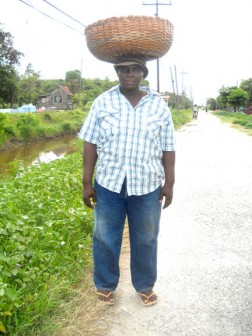
As the years passed it returned to the multi-ethnic community, it is today. “It never had any dispute after the 60s and it remained that way up until now,” Ivan says. “It’s a friendly village because anybody could come here and take up residence without any fear or anything.”
Residents also recall the remnants of the community’s Dutch past. They say that Stelling Road led to what was once a wharf. “We used to go and dig these Dutch bottles and we used to sell them,” Batson recalls. “We used to make quite a bit.” She also claims that for a period the Philadelphia Primary School was “haunted”.
Vegenoegen has three schools and the primary school was originally located in the neighbouring community of Philadelphia but was moved to Vergenoegen. According to Batson, they would turn up at school to find the furniture tossed to one side of the building. “That school was haunted at one point… we leave the classroom neat and everything and when you go back dey, all the furniture tossed to one corner,” she says.
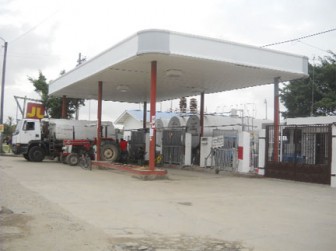
Trains run through the village no more, but villagers can still recall when the last one passed through: “I don’t forget that because you had joy ride the very day.” They also recount pushing cars stuck in the loam of the highway that was then being built. “I can remember one day, a guy all his eyebrows gray, gray…. and we pushed his car and we told him the amount of money it would be and so and the man drive away and he never paid us,” recalls Lois Levans. The days of selling at night with a flambeau made with a Dutch bottle for light were also recounted as well as the first gas lamp, which was “a beacon for Vergenoegen” since travellers saw the light and knew when they had reached Vergenoegen.
They also recall the stalwarts who emerged from the village including Edward ‘Guitar’ Levans after whom Levans Street in the community is named. Levans, apart from being a headmaster was also a justice of the peace, commissioner of oaths to affidavits, composer, writer and singer. The village bakery, now Yve’s Bakery, founded by the Harrises is back in operation, having re-opened in 2003; it serves West Demerara and East Bank Essequibo.
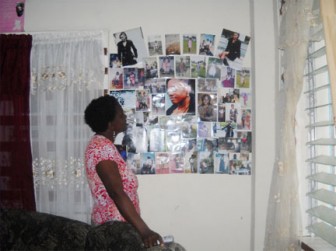
In more recent times, others have made the community proud. As well as entrepreneurs, the community produces beauties. The only person to have captured both the Miss Guyana World and Miss Guyana Universe crowns, Odessa Phillips, calls Vergenoegen home.
But these days, ‘Veggae’ is perhaps most famous because it is the home of Slingerz — the hottest sound system in Guyana — and hosts Vergenoegen Village Day, the preeminent Christmas Day fete in the nation. Out of Slingerz emerged the slogan the “West Side is the Best Side”. But this is something that Vergenoegen residents knew all along.
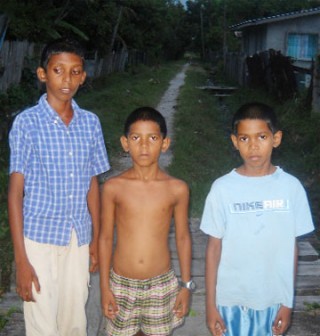
In almost every yard, fruit trees bloom, some growing to gigantic proportions providing shade to complement the cool breezes that blow off the nearby Essequibo River and Atlantic Ocean. “We all live together. We is mix-up people,” says Lilawattie Lakhan who was born and grew up in the village.
“In a nutshell, Vergenoegen is a quiet place. We have no problem,” Ivan says.





